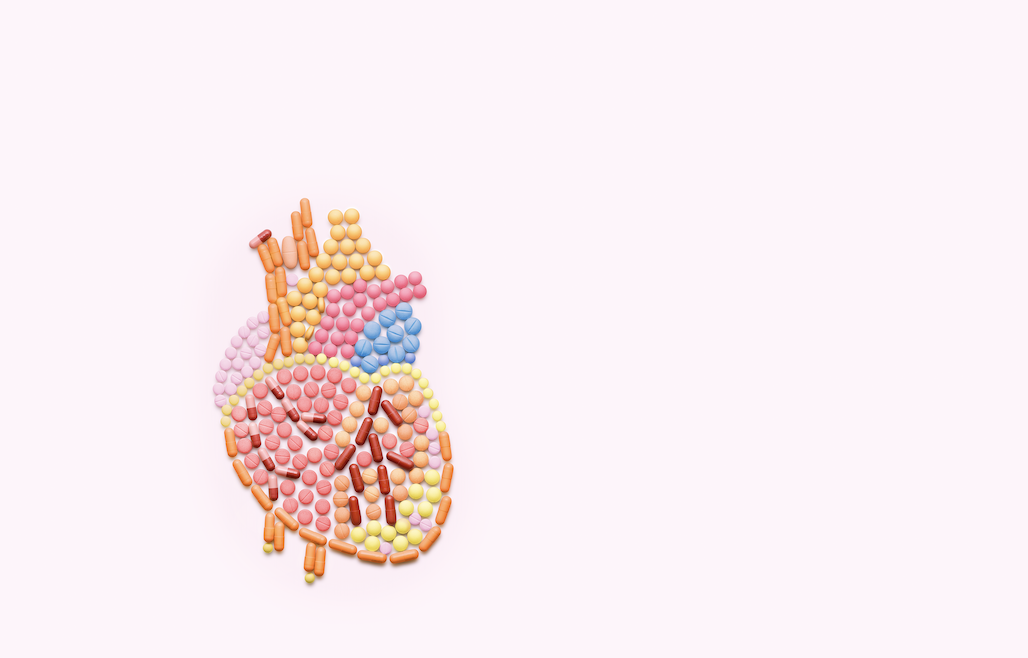Introduction
Dental health is an important part of an individual’s overall health and affects much more than appearance. However, despite this, dental health is often overlooked in primary care settings.
An individual’s dental health varies over his or her life time, from early age to old age. Poor oral health can contribute to systemic conditions such as cardiovascular disease, diabetes, and respiratory infections. There are several conditions that affect dental and oral health, including dental caries, periodontal disease, xerostomia, infection, and halitosis.
Dental care traditionally is the role of dentists and dental hygienists. However, pharmacists can play an integral role in promoting good oral health and bridging the gap between dental health and general health. According to the World Health Organisation, untreated dental caries is the most common health condition globally. Periodontal disease is also among the most prevalent conditions, affecting individuals of all ages. Pharmacists are one of the most accessible healthcare professionals in the primary care setting and can therefore help reduce the burden of these conditions through preventive advice, patient counselling, and pharmacological treatment.1
Good dental care practices
Good oral health is based on good dental hygiene and there are many practices that pharmacists can promote. Firstly, individuals should be counselled to brush their teeth at least twice daily. Brushing teeth is vital to remove dental plaque – a sticky and colourless film of bacteria that can cause tooth decay and gum disease. Individuals should brush gently on all sides of each tooth using small, circular motions, as well as cleaning between the tooth and gums. Brushing the tongue is also important in maintaining good oral health.
Fluoride toothpaste is indispensable as it strengthens tooth enamel and helps prevent tooth decay. If plaque is not removed, it can harden and irritate the gums, and lead to gum disease. A good flossing technique is important, with interdental brushes useful for individuals who struggle with flossing. Flossing involves removing food particles and plaque from between the teeth and under the gum, where a toothbrush may not be able to reach.
Additionally, mouthwashes can be used to improve dental health. Mouthwashes can be recommended based on an individual’s needs, with fluoride useful to prevent dental cavities and chlorhexidine useful for periodontal issues.2
Diet can also be an important factor in dental health. A balanced diet with calcium, phosphate, and vitamins is essential for dental health. Limiting snacks and drinks with a high sugar content is important, as they can contribute to tooth decay. Furthermore, drinking water with correct amounts of fluoride also helps protect tooth enamel. Excessive alcohol consumption and smoking tobacco are risk factors for periodontal disease, oral cancers, and other conditions. Therefore, smoking cessation programmes and reducing alcohol consumption are important for dental health.
Finally, individuals should be encouraged to attend regular dental check-ups for professional cleaning and examination, which are important in early detection and management of dental conditions. Individuals can help maintain good dental health and prevent the onset of dental conditions by following these practices.2
Common dental conditions
There are a wide range of common dental conditions that people experience over their lifetime. Pharmacists often encounter these conditions in their practice. Many of these conditions can be managed with either pharmacological or non-pharmacological treatment. Some of these common conditions are outlined below.
Dental caries
Dental caries, also known as tooth decay, is the demineralisation of the tooth structure over time due to acids produced by bacteria. Dental caries is a huge healthcare issue as it is the most prevalent disease worldwide, with almost 100 per cent of adults affected. Insufficient fluoride exposure is considered a contributing factor for dental caries. Symptoms of dental caries include pain and difficulty in eating. Complications include inflammation of nearby tissue, abscess formation, and tooth loss.
Dental caries is a common chronic disease resulting from tooth-adherent bacteria, which metabolise sugars to produce acids and cause demineralisation over time. Dental caries is therefore considered a dietary-microbial disease as it requires a cariogenic biofilm and regular exposure to fermentable carbohydrates from the diet. Caries can be initially managed by non-invasive procedures, such as remineralisation, biofilm removal, and sealing. More severe caries may require removal of dental tissue.3
Dental caries is a huge healthcare issue as it is the most prevalent disease worldwide, with almost 100 per cent of adults affected
Periodontitis
Periodontitis, also known as gum disease, is a disease of the tissue surrounding tooth structure. It is one of the most common conditions in oral health. The early stage of gum disease is called gingivitis, where the gums become inflamed and may bleed. Periodontitis is the more severe form of the disease, where gums can pull away from the tooth, bone can be lost, and teeth may loosen or fall out. The disease is affected by both local and systemic factors. Periodontal disease has a multifactorial aetiology, with the bacterial biofilm on the tooth surface the main factor. Other local factors, including plaque, play a role, as do genetics, systemic health, stress, and environmental factors. Early treatment is important as it can prevent tooth loss and other health problems. Treatment options involve maintaining good oral hygiene and professional teeth cleaning, while antiseptic mouthwashes can also be useful. Dietary changes and smoking cessation can also improve periodontal health. In some cases, surgery or antibiotics may be necessary.4
Oral ulcers
Oral ulcers, also known as canker sores, are painful sores that often reoccur in the oral cavity. The aetiology of this condition is unknown, which can be a challenge. Factors linked to oral ulcers include genetics, local trauma, stress, certain foods, anaemia, and gastrointestinal diseases such as inflammatory bowel disease and coeliac. Furthermore, they can be a clinical manifestation of more severe conditions including human immunodeficiency virus infection (HIV). It is a common condition, affecting up to 25 per cent of the population. Symptoms can range from minor pain to severe pain that can interfere with eating and drinking, which can lead to malnutrition. There is no specific management plan for oral ulcers, with the objective of treatment to relieve symptoms, decease severity of ulcers, promote healing, and prolong remission. Management is influenced by pain intensity, frequency of episodes, and the patient’s medical history. Avoiding potential trigger factors is an important preventive measure. Milder episodes of ulcers may be controlled with topical NSAIDs, such as benzydamine mouthwash. Chlorhexidine is an antiseptic that can reduce bacterial load, prevent infection, and promote healing. Topical corticosteroids may be used in more severe cases. A short course of systemic corticosteroids may be used in very severe episodes, but long-term use is not recommended due to adverse effects.5
There are several causes of xerostomia, with medication adverse effects the most common cause, followed by Sjogren’s syndrome, and radiotherapy
Xerostomia
Xerostomia is the sensation of oral dryness. This can be due to reduced saliva production but can also be present without a measurable decrease in saliva quantity. The main symptoms of xerostomia include mouth dryness, oral burning, difficulty swallowing, and altered taste. There are several causes of xerostomia, with medication adverse effects the most common cause, followed by Sjogren syndrome, and radiotherapy. Systemic conditions such as systemic lupus erythematosus, rheumatoid arthritis, thyroid conditions, and diabetes mellitus can also cause xerostomia. Many classes of medication can cause xerostomia, including anticholinergic agents, diuretics, antihistamines, antidepressants, analgesics, antihypertensive agents, and anxiolytics.6
The main objective of treatment is symptomatic relief. The underlying cause should be explored and treated if possible. If it is medication-induced, switching to another medication should be considered. Patient education on lifestyle choices that can decrease symptoms is important. Patients should be counselled on the factors that can help alleviate symptoms including frequent sipping of water, using sugar-free gum, increasing fluid intake to prevent dehydration, and avoiding caffeine, tobacco, and alcohol.
Local measures can also be used to treat xerostomia, with artificial saliva in a gel, spray, or lozenge an option which can be useful before meals or on an as-required basis. However, these products don’t work reliably, can be costly, have a limited duration of action, and can taste unpleasant. Pharmacological therapy can be used if other treatment options fail. Pilocarpine works on muscarinic receptors and stimulates saliva production. However, this medication is unlicensed in Ireland.6,7
Dental infections
Dental infections may be relatively straightforward to diagnose and access but can be difficult to acutely manage. Dental abscesses usually arise secondary to dental caries, local trauma, broken teeth, or extensive periodontal disease. If these infections are not appropriately treated, they can cause extreme pain, tooth loss, and can descend into the neck spaces or ascend to intracranial sinuses. Therefore, identification, diagnosis, treatment, and patient education can relieve symptoms and prevent complications. Dental abscesses should be treated initially with local measures to drain the abscess and remove the cause if possible. Antibiotics should be reserved for cases of systemic involvement (malaise and fever), cases of the infection spreading (cellulitis, involvement of lymph nodes or swelling), or when local measures fail.8,9
Phenoxymethylpenicillin is the first-line treatment option for bacterial dental infections. It is to be taken every six hours – or amoxicillin can be taken every eight hours if adherence to phenoxymethylpenicillin is likely to be difficult. Metronidazole is the first-line option in the case of penicillin allergy. Metronidazole is eight hourly dosing, and alcohol should be avoided during the treatment course and for 48 hours after. The duration of treatment depends on both the severity of infection and the clinical response, but antibiotic therapy is generally five days. For severe dental abscesses, where there may be extra-oral swelling, trismus, or eye closing, metronidazole may be used in combination with a penicillin antibiotic. The use of clindamycin, cephalosporins, co-amoxiclav, and macrolides offer no advantage over the above-mentioned antibiotics and are not recommended for the routine management of dental infections. Analgesics can be used to manage pain associated with dental infections. Non -steroidal anti-inflammatory drugs (NSAIDs) are first-line treatment for managing acute dental pain, if no contraindications are present. They are more effective in managing dental pain than opioids. Paracetamol can be used in combination with NSAIDs for more effective pain relief.8,9,10
The duration of treatment depends on both the severity of infection and the clinical response
Oral candidiasis is a fungal infection of the mouth by Candida albicans. This condition is generally secondary to immunosuppression. This can be due to immunocompromising disease, systemic corticosteroid use, inhaled corticosteroids, or antibiotic use. Patients should be educated on proper inhaler technique and counselled to rinse their mouths after use to reduce the chance of developing oral candidiasis. Good oral hygiene practices and topical antifungal therapy are generally sufficient to treat mild oral candidiasis, while systemic antifungal therapy is generally reserved for individuals who are refractory or intolerant to topical treatment, and individuals at a higher risk of developing systemic infections. Nystatin and miconazole are topical antifungals used to treat oral candidiasis. Moderate-to-severe disease can be treated with oral antifungals, such as fluconazole or itraconazole.11
Role of the pharmacist
Pharmacists play an important role in dental health, complementing the work of dentists and contributing to oral health. They have an important role in patient education on good dental health practices, particularly in relation to brushing, flossing, diet, the use of fluoride, and encouraging regular dental check-ups. Pharmacists can also offer advice on over-the-counter treatment for conditions such as dental pain and dry mouth or refer to another healthcare professional if necessary. Pharmacists ensure that medications for dental conditions are used safely and effectively, by counselling patients on their proper use and monitoring for drug interactions and adverse effects. Finally, pharmacists collaborate with dentists and other healthcare professionals to ensure optimal patient care. Pharmacists can make a significant contribution to the dental health of their patients and therefore enhance the overall health and wellbeing of their patients.
References
- World Health Organisation (2023). Oral health. [online] World Health Organisation. Available at: www.who.int/health-topics/oral-health#tab=tab_1.
- National Institute of Dental and Craniofacial Research (2020). Oral hygiene. [online] www.nidcr.nih.gov. Available at: www.nidcr.nih.gov/health-info/oral-hygiene.
- Rathee M and Sapra A (2023). Dental caries. [online] PubMed. Available at: www.ncbi.nlm.nih.gov/books/NBK551699/.
- Mehrotra N and Singh S (2019). Periodontitis. [online] Nih.gov. Available at: www.ncbi.nlm.nih.gov/books/NBK541126/.
- Plewa MC and Chatterjee K (2021). Aphthous stomatitis. [online] PubMed. Available at: www.ncbi.nlm.nih.gov/books/NBK431059/.
- Talha B and Swarnkar SA (2020). Xerostomia. [online] PubMed. Available at: www.ncbi.nlm.nih.gov/books/NBK545287/.
- HSE.ie. (n.d.). Dry mouth. [online] Available at: www2.hse.ie/conditions/dry-mouth/.
- Sanders JL and Houck RC (2020). Dental abscess. [online] PubMed. Available at: www.ncbi.nlm.nih.gov/books/NBK493149/.
- Erazo D and Whetstone DR (2020). Dental infections. [online] PubMed. Available at: www.ncbi.nlm.nih.gov/books/NBK542165/.
- Acute dento-alveolar infection (dental abscess) HSE.ie (2023). [online] HSE.ie. Available at: www.hse.ie/eng/services/list/2/gp/antibiotic-prescribing/conditions-and-treatments/dental/acute-dento-alveolar-infection/acute-dento-alveolar-infection.html.
- Taylor M and Raja A (2023). Oral candidiasis (thrush). [online] PubMed. Available at: https://www.ncbi.nlm.nih.gov/books/NBK545282/.







